A lot goes into choosing the right diet. Understanding what your body needs is essential, along with the level of planning required and the ethical considerations tied to your dietary choices. This article explores the latest research on plant-based diets and offers important considerations if you’re exploring whether an omnivore diet might be right for you.
What is a Vegan Diet?
Eating vegan means eating no animal products at all, which includes dairy, eggs, and honey. Those eating vegan also tend to make lifestyle choices that involve owning clothes that do not contain animal/insect produced fibers and using cleaning and self care products that do not contain animal made ingredients or have been tested on animals. Most people who eat vegan don’t want to harm any animals in any way, taking a moral stance
There are considerations to take when eating a vegan diet. Animal meats are more accessible and better quality protein sources. Eating vegan can also lead to nutrient deficiencies, as major nutrients are less bioavailable or absent in plant-based foods. These include: Vitamin B12, Omega-3 fatty acids (DHA & EPA), Iron (non-heme), Zinc, Iodine, Calcium, Vitamin D, Selenium, Protein (Lysine & Methionine). Those on a vegan diet might need to take vegan supplements to ensure these essential nutrients are ingested.
Meeting the required daily protein for regular functioning on a vegan diet requires a lot of planning and regular tracking. It’s advised that you find a vegan protein powder as a supplement in order to hit optimal daily protein targets. Vegan foods that are high in protein include tofu, tempeh, quinoa, beans & rice, chickpeas, and other legumes. These foods should be eaten every meal. A consideration for these protein sources is the potential for overeating carbs in relation to the amount of protein to hit your daily macros. Learning how to track your macros properly is essential for this process.
There are also studies that show lower digestibility and essential amino acid content in vegan diets, as well as observational data indicating that vegans generally consume less protein and fewer nutrients compared to omnivores. However, protein digestibility and essential amino acid content may not matter as much for muscle building when viewed in the context of one’s overall diet.
Additionally, observational data on vegans in the general population may not accurately represent individuals in the fitness community. A 2024 study indicated that a completely vegan diet can be effective for maximizing muscle gain in bodybuilders. The caveat is that these were professional athletes with a very intentional and structured approach to eating. So, while this study suggests that building muscle on a vegan diet is possible, doing so requires significant focus, time, planning, and accountability.
What is a Vegetarian Diet?
Someone who is vegetarian does not eat meat, but eats eggs and dairy. Being vegetarian helps with potential nutrient and protein deficiencies since eggs and dairy can be included, which means a better macro composition. However, vegetarians still have a potential for nutrient deficiencies and might need to supplement.
What is a Flexitarian Diet?
Flexitarians eat mostly plant based foods, but their diet is flexible enough to allow for some meat, eggs & dairy intake on occasion. This can make it harder to hit protein goals than an omnivore diet. However, a flexitarian diet focuses on nutrient dense foods and is better for hitting protein targets than eating vegan or vegetarian. A question you should ask yourself when considering a flexitarian diet is should you eat meat and what are your values around eating meat?
Vegan vs Vegetarian vs Flexitarian Diets
When it comes to protein and overall nutrient intake, a vegan diet carries the highest risk of deficiencies. If you follow a vegan lifestyle, regular bloodwork to identify potential deficiencies, strategic supplementation, and intentional meal planning, especially around protein, is essential. Vegetarians are more likely to meet their protein needs than vegans, but they still require thoughtful planning. Flexitarians have the greatest likelihood of meeting both their protein and nutrient goals, though their diet also benefits from strategic meal planning.
In short, eating meat remains the most straightforward way to ensure you’re hitting your daily protein targets and nutrient needs. That said, it’s entirely possible to meet your goals on a plant-based diet; it just takes more intention and effort. If your values align more closely with a vegan, vegetarian, or flexitarian approach, you’ll need to rely on research, your own diligence, and planning to ensure your body is fully supported. This is especially pertinent if you’re active and training regularly.
Health Benefits of Each Diet
Eating vegan is associated with plenty of health benefits. Research shows it can reduce the risk of chronic diseases such as heart disease, high blood pressure, type 2 diabetes, and certain cancers. Vegans tend to have lower cholesterol levels and blood pressure, largely due to the absence of animal fats and the high intake of fiber-rich plant foods. Many vegans who eat whole foods and limit processed foods also maintain a healthier body weight, as this diet is typically lower in calories. Additionally, the abundance of prebiotic fiber in plant-based diets supports a diverse and healthy gut microbiome.
A vegetarian diet offers greater ease in meeting nutritional needs. Vegetarians often experience improved cardiovascular health, better weight management, and a lower risk of metabolic syndrome and certain cancers. The inclusion of dairy can also contribute to better bone health through calcium and vitamin D. Nutrient gaps tend to be less common than in vegan diets.
Eating flexitarian provides many of the benefits of a vegetarian or vegan diet while offering greater dietary flexibility, which can make it easier to maintain long-term. Studies suggest that flexitarians enjoy a reduced risk of heart disease, obesity, and type 2 diabetes when their diet is based on whole foods and limited in processed and red meats. The inclusion of nutrient-dense animal foods makes it easier to meet protein and micronutrient needs without extensive planning. Eating flexitarian is the most sustainable and balanced option out of the three diets.
Cons Of Each One
A vegan diet, while rich in plant-based nutrients, can come with some challenges. One of the primary concerns is the risk of nutrient deficiencies, particularly vitamin B12, iron, calcium, omega-3 fatty acids (especially EPA and DHA), iodine, and high-quality protein. These nutrients are predominantly found in animal products, so vegans need to be intentional about supplementation or finding fortified foods. A vegan lifestyle requires more planning to ensure meals are nutritionally balanced, especially when it comes to protein sources and essential amino acids. Vegans are more prone to leaning on processed substitutes for meat and dairy, which can be high in sodium and additives.
Vegetarians still carry some of the same potential drawbacks as eating vegan. Nutrient deficiencies such as insufficient intake of vitamin B12, iron (especially the non-heme form found in plants), omega-3 fatty acids, and zinc can still occur. The inclusion of dairy and eggs can sometimes result in consuming more saturated fats or calories than intended, possibly leading to weight gain. From an ethical perspective, vegetarians may also struggle with the inconsistency of avoiding meat while still consuming other animal products, which can be at odds with animal welfare or environmental values.
One of the biggest drawbacks to a flexitarian diet has the least amount of drawbacks. It’s important to consider how many times a week you’re ingesting animal proteins to support your body. For people driven by ethical reasons like animal rights or environmental sustainability, a flexitarian approach may conflict with certain values.
Environmental Impact of Each Diet
One of the main anti-meat arguments is that the impact on the environment is huge. Greenhouse emissions from meat production in commercial settings is a major concern, and while different solutions are being thrown around, one solution is to simply not eat meat.
This doesn’t fully take away the problem, though. The amount of soy or other mono crops needed to eat a healthy vegan diet that delivers enough protein is also a consideration. The biggest environmental impact of non-meat products comes from land use change, the effect on soil quality, and things like transport and packaging.
Soybean plantations are responsible for deforestation, soil erosion, and pesticide runoff, all of which threaten wildlife habitat and biodiversity. In some cases the carbon cost is also high as the soybeans travel from the plantations to processing centers, then to your grocery store. The impact is less overall than eating commercial meat, but it’s still an impact.
However, environmentally speaking, eating meat that is locally and regeneratively sourced is the best way to source nutrients only available through meats and protein. Regenerative agriculture includes land management practices that aim to improve soil health, water quality, and biodiversity. It also aims to reduce greenhouse gas emissions and make communities more resilient to climate change. The animals are happier, healthier, better for human ingestion, and are integrated as an essential element to healthy land management.
Studies reveal that cattle raised on well-managed, natural grasslands can enhance soil carbon storage and support a biologically diverse grassland ecosystem. Which means that integrating livestock into croplands naturally enriches the soil, and reduces the reliance on synthetic fertilizers.
Producing food in alignment with regenerative practices benefits all beings. It’s also important to recognize eating this way is a privilege. Meats and produce grown in these kinds of settings are more expensive because of the local labor involved. However, eating regeneratively is far better than eating from commercial sources.
So leaning in to nature-positive practices, we can find food production systems that support regenerative ecosystems, with diverse foods and farming methods playing roles in this solution. And, you can be a better consumer of this food by understanding where your meat comes from and supporting regenerative farming practices.
Which Diet is Right For You?
When choosing which diet is better for you, you should consider:
- Are you ok with eating animals in the first place?
- Are you concerned about the environmental impact of food production?
- Are you training or active and need more protein?
- Are you willing to get blood tests to see what nutrients you’re deficient in?
- Do you have time to prepare meals and research?
If you are ok with eating animals, even on occasion, and place a high value on the environment, the best way to eat is an omnivorous or flexitarian diet that includes meat sourced from local and regeneratively sourced practices. Eating meat from these sources is actually far better for the environment and for your body than sourcing vegan protein powder in almost all cases.
However, if your values are not in alignment with sourcing meat or other foods from animals, you need to accept responsibility for providing the most nutrient dense diet for yourself as possible. This means doing your research on your daily macro needs, understanding what supplements you might need to take, knowing what ingesting adequate protein for your needs actually looks, and putting in the appropriate time and effort.
Choosing Between Vegan, Vegetarian & Flexitarian Diets
Eating a plant based diet is absolutely doable but challenging. As a reminder, blood panels and supplementing with either a functional medicine doctor or a healthcare practitioner is essential if you are completely vegan. Understanding what you’re deficient in and having a plan that might include support from a dietitian or other partner to help you build out a healthy diet is key when you’re cutting out any food groups, whether it’s meat, dairy, gluten, or something else. Creating your perfect diet requires a lot of thought and intention.
However, if your concern is just for the environment, take some time to learn how adding livestock to land in a regenerative way is actually best practice for farming, period. Google regenerative farms in your area and/or start buying your meat from your local farmers market.
Want to learn more about the right diet for you? Listen to episode 220 of the Stronger Than Your Boyfriend Podcast: Plant-based Diets / Exploring the Flexitarian Diet / Vegan Diet
Sources Cited:
WWF. (n.d.). Can we eat meat without harming people and planet? WWF Living Planet. Retrieved from https://livingplanet.panda.org/blogs/can_we_eat_meat_without_harming_people_and_planet/
Griscom, B. W., Adams, J., Ellis, P. W., Houghton, R. A., Lomax, G., Miteva, D. A., … & Fargione, J. (2017). Natural climate solutions. Proceedings of the National Academy of Sciences, 114(44), 11645–11650. https://doi.org/10.1073/pnas.1710465114
Ciuris, C., Lynch, H. M., Wharton, C., & Johnston, C. S. (2019). A comparison of dietary protein digestibility, based on DIAAS scoring, in vegetarian and non-vegetarian athletes. Nutrients, 11(12), 3016. https://doi.org/10.3390/nu11123016
Iguacel, I., Miguel-Berges, M. L., Gómez-Bruton, A., Moreno, L. A., & Julián, C. (2021). Nutrient intake and status in adults consuming plant-based diets compared to meat-eaters: A systematic review. Nutrients, 13(4), 1265. https://doi.org/10.3390/nu13041265
Goldman, D. M., Warbeck, C. B., & Karlsen, M. C. (2024). Protein requirements for maximal muscle mass and athletic performance are achieved with completely plant-based diets scaled to meet energy needs: A modeling study in professional American football players. Nutrients, 16(12), 1903. https://doi.org/10.3390/nu16121903



